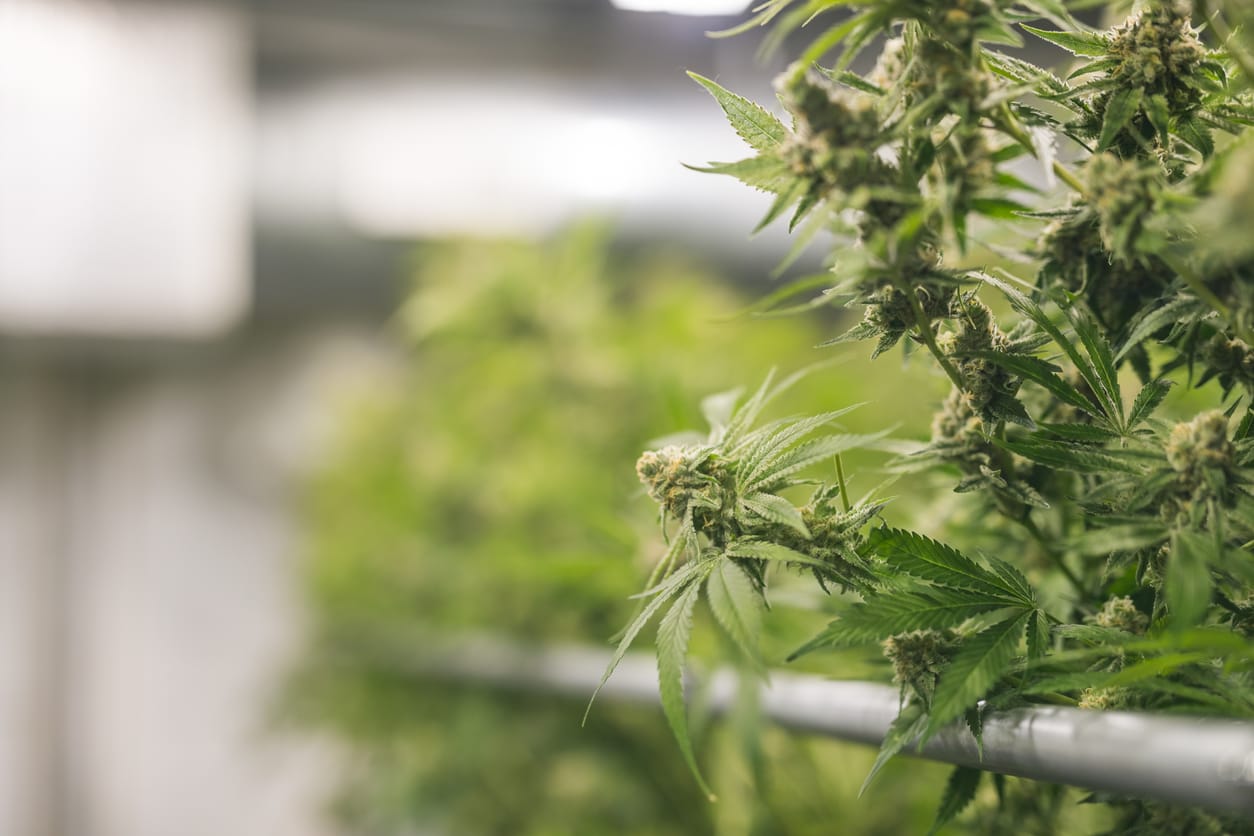Preventing Bud Rot in Cannabis Cultivation Through Precision Humidity Control
Data-driven humidity management, including right-sized dehumidification, can nearly eliminate this common threat.


Cannabis cultivators invest heavily in genetics, nutrients, and sophisticated lighting—only to see yield losses when bud rot, also called “grey mold” or “Botrytis” after Botrytis Cinerea, the most common form of the Botrytis fungi,
The culprit? Excess humidity and poor airflow allow fungal spores to flourish, especially in dense late-flower buds.
Fortunately, data-driven humidity management, including right-sized dehumidification, can nearly eliminate this common threat.
Why Bud Rot Occurs
Dense canopies
In mid- to late-flower, buds pack in tightly, obstructing airflow and trapping moisture, which fosters condensation and spore germination. This thick canopy not only harbors higher RH but also complicates early detection of infections, allowing fungi to spread unseen.
Relative Humidity spikes at Lights-Off
Even a modest 10% jump in RH after lights-off can push buds to the dew point, creating ideal conditions for fungal growth. Sudden changes in temperature and moisture can trigger condensation on flower surfaces, fueling fast-tracked bud rot.
Poor Air Circulation:
Stagnant “dead spots” hinder a room’s ability to maintain uniform RH, fueling localized outbreaks. Without strategic fan placement or ducting, microclimates with minimal airflow can become fungal hotspots, especially deep within dense canopies.
Genetic Susceptibility:
Certain strains with bulkier, resinous flowers need stringent climate control, as their heavier bud structure invites hidden condensation pockets. While some cultivars exhibit fewer symptoms, no fully resistant genotype has been identified, making vigilance essential.
Inadequate Cleaning & Sanitizing:
Residual spores in ductwork, fans, or surfaces can easily persist between grow cycles. Thorough disinfection, including the interiors of dehumidifiers and HVAC systems, is essential to prevent hidden pathogen carryover that sparks new infections.
VPD & Environmental Factors
Vapor Pressure Deficit (VPD): Keeping VPD in a sweet spot (generally ~0.8–1.2 kPa during flower) encourages stable transpiration, avoids leaf-surface condensation, and reduces bud rot risk.
Dew Point Alignment: When the ambient dew point approaches leaf or bud temperature, condensation forms. Monitoring both the room temp and leaf temp helps growers preempt moisture issues.
Right-Sized Dehumidification
Multiple units vs. one oversized machine
Oversized Single Unit: Tends to cycle on/off abruptly, dropping RH too far and then allowing big rebounds—stressful for plants and perfect for mold outbreaks.
Multiple Units: Adding in smaller units can provide more frequent, shorter cycles, helping to maintain stable RH (±3%) and avoid the major swings that bud rot loves.
Capacity Calculation:
Estimate daily transpiration (1–2 pints per sq. ft. of canopy). Consider infiltration, irrigation style, and genetic demands to size dehumidifiers accurately for peak load.
Key Strategies for Mold-Free Harvests
- Targeted Airflow & Layout:
Space plants or use trellis netting to prevent buds from clustering too tightly.
Use horizontal airflow fans to break up stagnant pockets around the canopy.
Keep the air moving in a manner to keep the entire room’s temperature and RH mixed and stable.
2. Monitor & Log RH in Real Time:
Automated sensors alert growers to sudden spikes, especially at lights-off.
Weekly or daily data reviews identify recurring humidity issues.
3. Optimize Temperature Ramps:
Gradually raise daytime temps and taper off at night to prevent abrupt dew point changes.
4. Clean & Maintain Equipment:
Clogged coils or filters reduce dehumidifier capacity and efficiency.
Regular coil cleaning ensures consistent moisture removal.
Cleaning the equipment and replacing the filters between grow cycles prevents carryover of pathogens from one crop to the next.
MERV 13 filtration protects the plant and your crew from airborne pathogens.
ROI & Payoff
Less bud rot means higher marketable yields, improved consistency, and better revenue. A stable environment will protect your plants’ cannabinoid/terpene expression, boosting quality; your bottom line will thank you.
Ultimately, by dialing in your grow with an eye toward preventing bud rot, you’ll encounter fewer last-minute salvage attempts with fungicides or plant culling.
And this dehumidification strategy is something that can grow with your company (or any company). The same multi-dehumidifier approach can scale from small craft grows to multi-state operations.
Conclusion
Bud rot is one of the costliest hurdles in cannabis cultivation, yet it’s preventable through precision humidity management.
Properly sized dehumidifiers and a real-time data strategy give growers the upper hand against fungal spores. By investing in right-sized climate controls, cultivators keep their canopy healthier, terpenes robust, and profits secure. If you need help properly sizing your dehumidifiers for your space, reach out to our team. We’re here to help. Your plants, your profits, and your peace of mind will thank you.
Published on Apr 07 2025
Last Updated on Apr 10 2025
Categories: Commercial Dehumidifier, Dehumidification, Growing Cannabis
